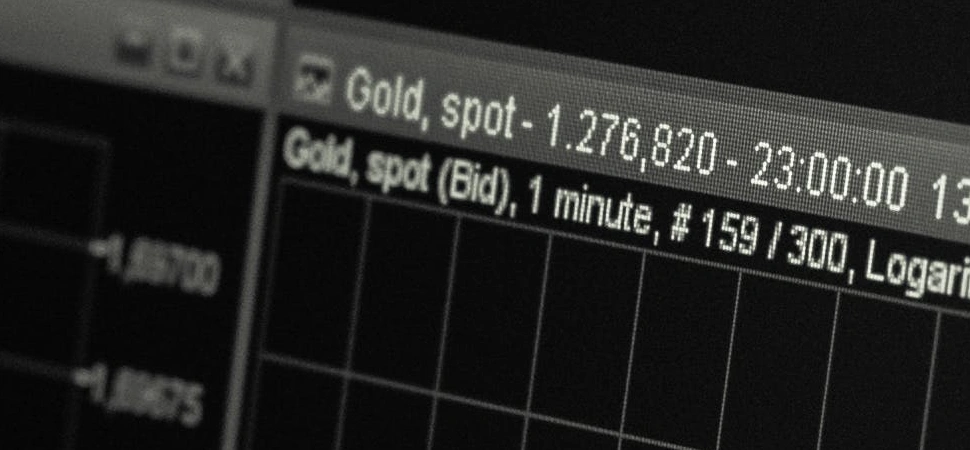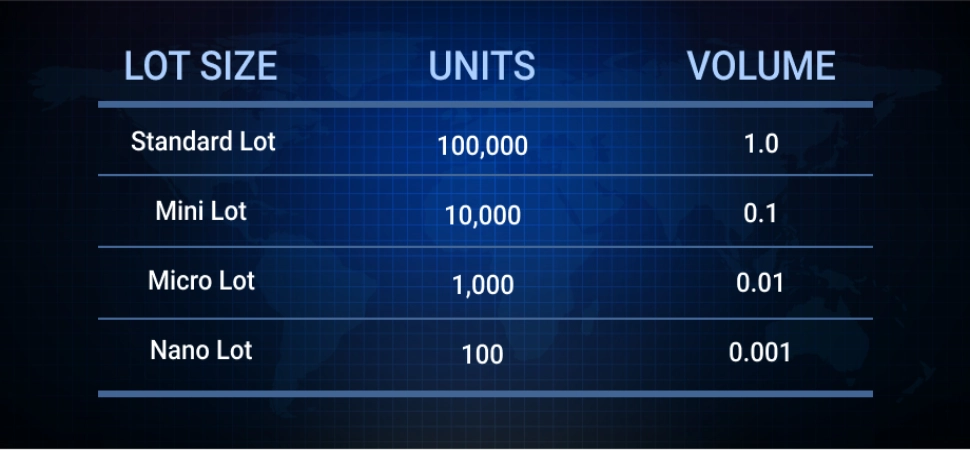10.04.2024
Евгений Лебедев
425

Lot size is the number of currency units in a currency pair. The number of base currency units a Forex trader has. The base currency is the first currency in a currency pair quote. The lot size you trade directly affects the impact of market movements on your trading account. Bigger lots mean bigger profits, but also bigger losses. Lot size affects your trading strategy and risk management.
Maintaining a reasonable lot size in relation to the amount available in your trading account ensures that you have enough trading capital for future trades. Note that some Forex brokers specify quantities in "lots" while others specify real currency units.
Types of lots
Standard lots
A standard lot is 100,000 units of the base currency in a currency pair quote. In other words, 100,000 units = 1 lot.
Example
However, if the broker provides leverage, dollars 124,000 is not needed; with leverage of 1 : 100, only dollars 1,240 is required to execute an order (124,000 / 100 = dollars 1,240).
Mini lots
A mini lot is equal to 10% of a standard lot (100,000 x 0.10 = 10,000 currency units). This means that if you open a trade with a 0.10 lot, you will exchange one mini lot. This is ideal for Forex traders who want to trade with less or no leverage.
Microlots
Microlots are 1% of the standard lot size (100,000 x 0.01 = 1,000 units). This means that when you start trading with a lot size of 0.01, you trade 1 microlot. A microlot is the smallest trading lot available from most brokers and is a good starting point for beginners.
Nanolot
A nanolot is 0.1% of a standard lot (100,000 x 0.001 = 100 units of currency); if you start trading with a 0.001 lot, it means you are trading 1 nanolot.
Some Forex brokers also call a nanolot a "100 lot" and it contains 100 units of currency. However, some Forex brokers use this term to refer to 10 units of currency.
Many Forex brokers do not currently offer such a lot, but if it is available, it is a safe starting lot size for beginners who want to try Forex education or traders who want to try out new trading strategies. For beginner traders, the first few weeks of trading is a smart strategy to avoid big losses.
The role of pip value in determining lot size
Lot size is very important as it directly affects the risk taken by traders in the Forex market. Market movements affect a trader's trading account and the lot size determines the extent of this impact. For example, a 100 pips movement on a small trade does not have the same impact as a 100 pips movement on a very large trade.
Now that you understand what lot size is, you should focus on calculating the cost per pip to determine the profit or loss on a Forex trade.

Calculating the value of a pip
A pip is a unit of measurement that represents the change in value of two currencies. It is usually the last decimal place in a currency pair quote. For example, if the EUR/USD quote changes from 1.1075 to 1.1077, this would be a change of two points.
This is a fairly small percentage of the value of one unit of currency. The impact of a one pip change in price on your profit or loss depends on the currency pair you are trading and the currency you have deposited into your trading account. Pip calculations are usually done by the Forex broker or trading platform. It is useful to familiarize yourself with this process.
You can calculate the pip value by dividing 1/10,000 or 0.0001 by the exchange rate (also known as the current value of the currency pair). Multiply this value by the lot size, which is the number of units of the underlying asset being traded.
For example, if the GBP/USD exchange rate is currently at 1.2400 and you are trading a certain lot size, the value of one pip is equal to the lot size.
The standard lot size is 100,000 units: the cost per pip is calculated as (0.0001/1.2400) x 100,000 = 8.0645. This means that for every 1 pip of movement you lose or gain GBP 8.0645.
- Mini lots (10,000 units);
- Micro-lots (1,000 units): the value per point is 0.0806 (0.0001 / 1.2400) x 1,000, which means that for every 1 point movement you gain or lose GBP 0.0806;
- Nanolots (100 units): the cost per point is 0.0081 (0.0001 / 1.2400) x 100, which means that for every one point movement you gain or lose GBP 0.0081.
The cost per pip varies between currency pairs due to exchange rate fluctuations. However, if the quoted currency, i.e. the other currency in a currency pair, is the USD, the cost per pip is always the same.
- USD for standard lots of 100,000 units of currency;
- For mini lots of 10,000 units of currency, it is dollar 1;
- For micro lots of 1,000 currency units, it is 0.10 USD;
- For nanolots of 100 currency units, it is 0.01 USD.
Impact on risk
Point values are important because they affect the risk. Without knowing the pip value, it is impossible to calculate the most effective trading position, which can lead to too much or too little risk in Forex trading. When using leverage, the pip value represents a significant risk. The size of the pip directly determines and influences how much risk a trader is willing to take.

/ Reviews